Case Studies.
Add Case Study
Our Case Study database tracks 22,657 case studies in the global enterprise technology ecosystem.
Filters allow you to explore case studies quickly and efficiently.
Download Excel
Filters
-
(6,653)
- (2,601)
- (2,127)
- (945)
- View all
-
(5,642)
- (2,469)
- (1,692)
- (826)
- View all
-
(5,571)
- (2,178)
- (1,766)
- (643)
- View all
-
(5,247)
- (2,179)
- (1,715)
- (1,321)
- View all
-
(2,881)
- (1,448)
- (574)
- (376)
- View all
- View all 15 Technologies
- (1,985)
- (1,985)
- (1,915)
- (1,679)
- (1,629)
- View all 42 Industries
- (8,728)
- (4,742)
- (3,618)
- (3,233)
- (2,947)
- View all 13 Functional Areas
- (3,304)
- (2,787)
- (2,603)
- (2,006)
- (1,630)
- View all 129 Use Cases
- (13,581)
- (5,296)
- (4,272)
- (3,520)
- (2,856)
- View all 9 Services
- (504)
- (432)
- (416)
- (382)
- (301)
- View all 1083 Suppliers
Selected Filters
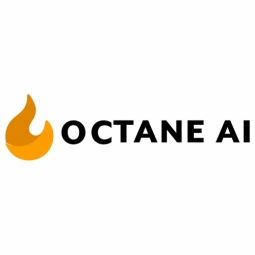
|
Personalizing Customer Experience: How florence by mills Doubled Their Shopify Sales Conversion Rate
Florence by mills, a skincare and beauty brand, faced a unique challenge in October 2021. The brand noticed a disconnect between the person transacting on their website and the end-user of the product. Often, it was a parent or family member buying products for a younger relative instead of someone purchasing for themselves. This presented a challenge in terms of engaging and converting both Gen Z consumers and their parents. The brand needed a solution that would guide both the end consumer and the gift-purchaser throughout their shopping journey, ensuring that the right products were recommended to the right customers.
|
|
|

|
Boosting Productivity through Connected Recruiting Automations: A Case Study on Ethan Allen
Ethan Allen Workforce Solutions, the largest full-service agency in the Hudson Valley area, was facing challenges in managing the talent lifecycle efficiently. The company specializes in healthcare, administrative, and industrial sectors, providing both direct recruitment and temporary staffing solutions. Despite transitioning to the Bullhorn Platform, the team was still grappling with manual processes that were time-consuming and inefficient. The challenge was to implement a system that could automate various stages of the talent lifecycle, from attracting and engaging to onboarding and nurturing talent. The goal was to enhance the candidate experience, create a consistently engaged talent pool, and lower the cost of talent acquisition.
|
|
|
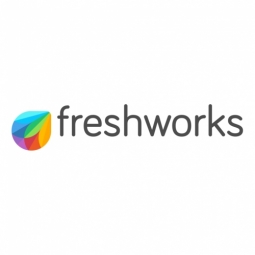
|
Mama Money Enhances Customer Support and Boosts Resolution SLAs by 40% with Freshchat
Mama Money, a rapidly growing tech company specializing in cross-border payments, was facing challenges with their customer support system. They were using Google Sheets to track all customer interactions, which became increasingly cumbersome as the company expanded into new regions and increased their field agent strength to 2500. The company was facing scaling and growth-related issues and needed a solution that could cater to their specific needs. These included identifying new channels for rapid market acquisition, managing the increased volume of customer interactions, and providing a simple and intuitive user interface, especially in markets like West Africa where users were less tech-savvy.
|
|
|

|
MediusGo's Journey to Reducing Customer Queries by 40% with Freshdesk
MediusGo, a cloud-based tool developed by Swedish software company Medius, was facing a significant challenge in managing a high volume of customer support tickets. The company was initially using Desk.com from Salesforce as their customer service solution. However, the solution was soon retired, and MediusGo needed to explore alternatives. The company evaluated several solutions, including Salesforce Lightning, Zendesk, Kayako, and Freshdesk. The primary goal was to find a solution that would allow them to be self-sufficient and not rely on consultants for every move. They also wanted to improve the adoption of self-service among their customers to reduce the number of support tickets. The company receives a large volume of support tickets every month, and they wanted to equip their customers with the knowledge and tools they needed to solve their own issues, reducing the need for regular contact.
|
|
|

|
Leveraging Instagram Automation for Enhanced Engagement and Lead Generation: A Case Study on Candace Junée
Candace Junée, the founder of Epic Fab Girl and 6-Figure Maven, was facing a challenge with her rapidly growing Instagram account. In less than a year, her follower count had surged from 10,000 to over 50,000. This growth led to an increase in direct messages (DMs) from followers asking about products or seeking customer support. Candace, who values attentiveness to her followers as a crucial part of her brand, found it increasingly difficult to respond thoughtfully to the large volume of DMs. She was looking for a more efficient way to manage her inbox, engage with her followers in a meaningful way, and continue to provide the high-quality customer experience that her followers had come to expect.
|
|
|

|
Revolutionizing Recruitment: Humber River Hospital Doubles Nursing Applications with ManyChat
Humber River Hospital, a major acute care facility in Toronto, Canada, was grappling with a significant challenge - the nursing shortage. The hospital was continually seeking first-rate ICU nursing candidates to staff its facility. However, the traditional recruitment methods, such as job ads on Indeed, were not yielding the desired results. The high competition among other Toronto hospitals made it difficult for Humber River Hospital to stand out with only a text ad. This resulted in a low return on investment (ROI) for its high cost. If the hospital didn't get enough candidates through job boards, they would have to resort to recruitment agencies, which cost an average of $15,000 per hire. The hospital was in dire need of a more cost-effective way to attract and qualify candidates for its internal recruitment agents.
|
|
|

|
Driving Sales and Brand Awareness: Nikmit's Success with ManyChat
Nikmit, an eCommerce marketplace based in Macedonia, was struggling to generate the desired return from their Facebook ad strategy. The company was primarily using Facebook ads with a traffic objective and boosted organic posts to generate interest and surface new products. However, this approach was not yielding the expected results. Nikmit needed to reach the right audiences and initiate conversations with them to boost awareness and sales. The company's goal was to better surface product lines and build relationships with new audiences through Chat Marketing.
|
|
|
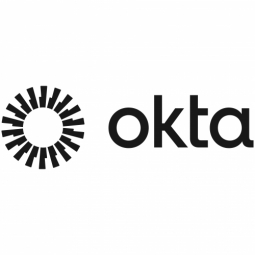
|
Okta's Advanced Server Access Bolsters Zoom's Security Amid Rapid Growth
Zoom Video Communications, Inc., a leading enterprise video communications platform, experienced significant growth during the first months of the COVID-19 pandemic. This rapid expansion required a scalable and secure identity solution that would also provide a seamless user experience. Zoom's legacy identity management environment was not equipped to scale easily with the public cloud or to the hundreds of thousands of systems in use. The company needed a solution that could handle the immense growth while maintaining security and compliance standards. The challenge was to find a solution that could secure server access, alleviate the pressure on Zoom's data center operations team, and provide a seamless user experience to the millions of customers who rely on Zoom for work, education, and personal use.
|
|
|
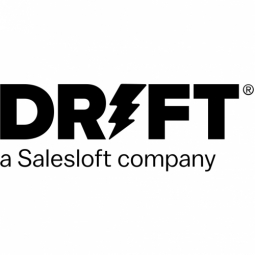
|
Emerson's Digital Transformation: Enhancing Customer Engagement with Drift
Emerson, a global technology, software, and engineering company, faced a challenge in elevating its digital engagement with customers and prospects. The company, which already had millions of web visits annually, wanted to improve the customer experience and connect customers with subject matter experts more efficiently. The goal was to reduce the time it takes for customers to get their needs met, replace form fills, capture intent, and deliver high-value leads directly to their product experts. Initially, Emerson used a simple web-based calendaring solution, but scalability was a problem given the company’s size, personnel depth, and geographic diversity. They needed a solution that could provide artificial intelligence with chat capabilities, which their previous tool lacked. Furthermore, Emerson required a globally scalable solution that would consider customer intent and a partner that could support them without adding headcount.
|
|
|

|
Employment Hero Enhances Customer Experience with Drift
Employment Hero, a rapidly growing startup based in Sydney, Australia, was faced with the challenge of providing an exceptional customer experience. The company, which offers a suite of powerful employment tools to over 80,000 businesses worldwide, wanted to engage buyers on their terms. They used digital marketing strategies to attract prospects to their website, but they needed a way to interact with these prospects once they were on the site. They wanted to be fully aware of the customer's location, activities, buying stage, and preferred engagement channel. The challenge was to find a solution that would allow them to engage with customers in real time, track and monitor their behavior on the site, and make the sales cycle more efficient.
|
|
|

|
Revamping Digital Strategy: How Proofpoint Boosted Chat Opportunities and Pipeline by 500% with Drift
Proofpoint, a global leader in cybersecurity and compliance solutions, faced a significant challenge in enhancing its buyer experience to match its high customer satisfaction and renewal rates. The company aimed to drive more traffic to their site and create a better buying experience for their visitors. However, their existing chat solution offered little visibility into site traffic and lacked integration with their existing sales and marketing platforms. This made it impossible for them to operationalize, scale, or enable chat across all of their regions. They needed a solution that could deliver a friction-free and highly relevant buyer experience, improve response times, filter and route traffic quickly and accurately, and increase sales efficiency by integrating with existing platforms and automating previously manual tasks.
|
|
|
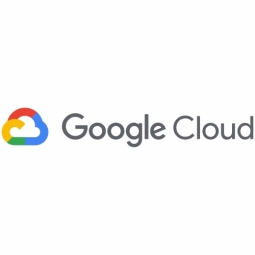
|
Augmented Human Lab: Enhancing Science Education with Google Cloud
Augmented Human Lab, a research center at Auckland Bioengineering Institute, was faced with the challenge of inspiring curiosity for science in children, particularly those who lacked confidence in science subjects. The lab's founder, Suranga Nanayakkara, wanted to create a fun computer interface that could become an extension of a child's curiosity and imagination. This led to the birth of the Kiwrious project, which aimed to make science playful and exciting by using plug-in sensors that capture environmental phenomena. However, to spread the Kiwrious mission, especially in disadvantaged schools, Suranga needed powerful cloud solutions to free up his small team from mundane tasks such as server maintenance, enable unlimited scaling power, and protect the identity of pupils with world-class cloud security.
|
|
|

|
Autonom8: Streamlining Customer Journeys and Reducing Operating Costs with Google Cloud
Autonom8, a US and India-based enterprise workflow management software business, aimed to help clients reduce costs and improve customer interactions through automation. The company provides a low-code SaaS platform that includes components like A8Studio, a chat platform, and an analytics module. However, the changing customer demands of enterprises, the rising cost of building software with experienced developers, and the need for customer journeys to evolve due to changing consumer habits and regulations posed challenges. Autonom8 initially deployed on a multinational cloud service, but the decision to opt for a microservices architecture that enables individual services to scale independently while running in a containerized environment demanded high-quality container orchestration. Furthermore, many of Autonom8's clients were financial institutions in India, legally required to retain data within the country's borders.
|
|
|

|
Avocados Don Goyo's Successful Migration to Google Cloud for Enhanced Operational Efficiency
Avocados Don Goyo, a leading exporter of fresh Hass avocado, was facing significant operational challenges due to its reliance on on-premises infrastructure. The company's servers were located in rural areas, making them vulnerable to inclement weather and recurring power outages. This resulted in stressful situations for employees who feared potential damage to equipment and subsequent data loss. The company's access to its SAP systems was heavily dependent on weather conditions, which hindered its ability to manage operations effectively and explore new business opportunities. As a company aiming for scalability and international expansion, Avocados Don Goyo realized that relying solely on on-premises infrastructure was no longer viable. They needed to transition to a more agile cloud technology that could provide full availability of its SAP systems, regardless of weather conditions.
|
|
|

|
AVROTROS: Enhancing Audience Engagement and Operational Efficiency with Google Cloud
AVROTROS, a Dutch radio and television broadcaster, was facing challenges in engaging its audience through online media and mobile apps due to the limitations of its existing infrastructure. The broadcaster's infrastructure was not optimized for the scale that popular mobile apps work at, leading to outages and users being locked out of the app. This was a significant issue as AVROTROS aimed to foster a deeper connection with its audience by using every channel available. Additionally, AVROTROS had outsourced its back-end and was totally dependent on its suppliers, leading to stability issues and outages. The broadcaster needed a next-generation infrastructure to engage and retain its audience with next-generation apps and gain greater control and visibility into its infrastructure management.
|
|
|

|
Bareksa: Leveraging Google Kubernetes Engine for Rapid Growth and Enhanced Customer Satisfaction
Bareksa, an Indonesian fintech startup, was founded in 2013 with the mission to provide investment opportunities to the rapidly growing middle class in Indonesia. However, as the popularity of the platform grew, Bareksa found itself struggling to scale services during spikes in customer demand. This was a significant issue for a startup that relied on speed and 100% reliability to succeed. Additionally, its engineering team was spending a significant amount of time on DevOps tasks, such as provisioning servers and managing databases, leaving little time for creating innovative fintech solutions to grow the business. Bareksa was operating in a monolithic on-premise environment, with physical servers and a self-managed database, which was proving to be inefficient and time-consuming.
|
|
|

|
Leveraging Google App Engine for Humanitarian Project Monitoring
Bedatadriven, a company that leverages data and analysis to achieve their clients' goals, was facing challenges with their core project, ActivityInfo. ActivityInfo is a database platform for humanitarian relief operations and development assistance, used by over 75 organizations across Africa and Asia. The platform was initially developed for UNICEF’s emergency program in eastern Congo and is now used to track relief and development activities across more than 10,000 project sites. The challenge was to ensure that the system was highly available, given the challenging environments that ActivityInfo users work in and the nature of the crises. They also needed minimal system administration, allowing Bedatadriven to focus on product development. The platform also needed to scale up and down according to the load, with minimal human intervention. They also required clear monitoring tools to help pinpoint performance problems.
|
|
|
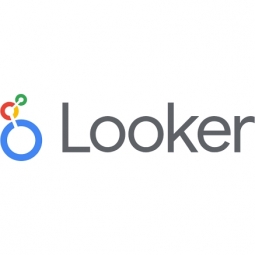
|
BlaBlaCar: Leveraging IoT for Enhanced Carpooling Services
BlaBlaCar, a leading long-distance carpooling platform, was facing challenges with its on-premises infrastructure. Initially built to support the French market, the infrastructure was struggling to keep up with the company's rapid global expansion. The company was experiencing issues with returning carpool search results consistently, processing payments, and connecting drivers and passengers. The engineering team was spending more time maintaining servers rather than focusing on enhancing platform features. The company needed a scalable, data-driven infrastructure that could support its growing global community and meet users’ needs in real time.
|
|
|
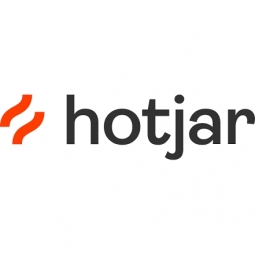
|
Leveraging Hotjar for Enhanced User Experience: A Case Study on Hussle
Hussle, an online marketplace for gyms and spas, faced several challenges in understanding user behavior and improving their product. Luke, the Product Lead at Hussle, was tasked with identifying and resolving issues that led to user churn, spotting bugs, and ensuring smooth launches of new features. The primary challenges included understanding why users were leaving the platform, identifying issues with new features, spotting broken user flows, and discovering bugs. The team needed to capture reliable feedback from users as they were leaving, which was a difficult task. Additionally, they needed to understand user interactions with new features and identify any issues that could hinder the user experience.
|
|
|

|
MITx’s edX Course Leverages Akselos for Complex Engineering Simulations on Google Compute Engine
Engineering simulations are a critical part of designing and assessing infrastructure such as bridges, buildings, and aircraft. However, the industry-standard technology, Finite Element Analysis (FEA), is computationally intensive and often unfeasible for large-scale 3D simulations. These simulations require large amounts of RAM, often exceeding the capacity of a desktop workstation, and can take hours or even days of computation time. This is particularly problematic when time is at a premium and engineers need to perform hundreds or thousands of simulations for a piece of critical infrastructure. Additionally, attempts to integrate simulations within university courses have been unsuccessful due to the complexity of the tools.
|
|
|

|
Alcide: Leveraging Google Kubernetes Engine for Efficient Cloud-Native Security
Alcide, a cloud-native security leader, was facing challenges in securing complex and distributed cloud stacks for organizations. The modern cloud deployment was intricate with numerous moving parts and shifting parameters, making it difficult to operate and secure. The traditional security protocols were not sufficient for the evolving technology standards and the convenience of the cloud. Alcide aimed to provide a complete security solution specifically designed for cloud-based infrastructure, but the process of provisioning new clusters was manual and time-consuming, taking up to 2-3 days. This was a significant drain on their resources and time, which were already limited.
|
|
|

|
Google Cloud Platform: A Recipe for Success at Allthecooks
Allthecooks, a social media platform for cooking enthusiasts, faced the challenge of managing a rapidly growing user base. The platform, which allows users to find, rate, comment on, and post their own recipes, had to process hundreds of thousands of simultaneous API requests whenever popular chefs updated their content. The company, which started with just three part-time engineers and no external funding, needed a scalable and reliable infrastructure to support its growth. The challenge was not just about speed, but also about scalability. As the user base grew, the need for a more robust backend processing architecture became evident. Cost was also a significant concern as the company was using its savings to build the platform.
|
|
|

|
Alma: Streamlining Installment Payments for Retailers and Customers with Google Cloud
Alma, a fintech startup based in France, was founded in 2017 with the aim of providing an easy-to-use payment service that guarantees instant payment to retailers while allowing customers to pay in installments. The 'buy now, pay later' model, while beneficial for retailers in terms of increased conversion rates, larger basket sizes, and improved customer satisfaction, also posed significant risks. Retailers had to bear the burden of chasing debts and the possibility of late or cancelled payments. In France, such schemes were only viable for larger enterprises with extensive working capital and large credit lines. Smaller businesses were unable to afford the financial risks or secure the same level of support from their banks. Alma sought to address this challenge by developing an installment payment platform that would be accessible to a wide range of retailers and customers.
|
|
|

|
Alto's Transformation of Ride-Hailing Experience with Google Maps Platform
Alto, a ride-hailing company founded in 2018, operates with a unique business model where all drivers are W-2 employees and the company owns all the cars. This approach is designed to provide a safe, clean, consistent, and high-quality experience for every passenger. However, the company faced challenges in maintaining efficiency and competitiveness due to its smaller size compared to more established ride-hailing companies. One of the key issues was imprecise pickup points, which often led to delays and customer complaints. Drivers were often directed to incorrect locations, requiring extra driving time or contact with the customer to determine the proper pickup point. Additionally, the company had to manually input custom areas, locations from which riders frequently request a pickup that are not necessarily on the map yet. This process was time-consuming and inefficient.
|
|
|

|
Apiiro: Enhancing Cloud-Native Application Security with Google Cloud
Apiiro, a cloud-native application security platform, was faced with the challenge of providing complete visibility of all application components to security and development teams. This was crucial in order to map the application attack surface and proactively remediate critical risks before releasing to the cloud. The complexity of security issues was increasing as software development accelerated and businesses used agile models to deploy more apps at a faster rate. Traditional application security tools were proving ineffective in improving a company's security posture due to the intricate combination of multiple factors that contribute to risks. Furthermore, Apiiro needed to ensure near-perfect uptimes to deliver resilience and grow its business on Google Marketplace.
|
|
|

|
Arab Bank: Revolutionizing App Development and Innovation with Google Cloud
Arab Bank, a leading financial institution in the Middle East, recognized the need to innovate and modernize its services to maintain its market position and attract new customers. Despite its strong presence in the market, the bank faced challenges in responding quickly to the growing consumer market and the small and midsize enterprise (SME) sector. The Middle East and North Africa (MENA) region, where Arab Bank operates, has a largely unbanked population, with a significant portion interested in new digital tech capabilities. The bank also had to deal with legacy systems and applications, which made it difficult to release new features and functionalities frequently. Furthermore, Arab Bank had to navigate regulatory constraints such as data residency rules in the countries where it operates.
|
|
|

|
Securing IT Infrastructure of Europe’s Largest Seaports: A Case Study of Hamburg Port Authority
The Hamburg Port Authority (HPA), responsible for managing all harbor-related infrastructure for the city of Hamburg, faced significant challenges in securing its vast IT infrastructure. This infrastructure included 350 kilometers of fiber cable, 850 routers and switches, 500 servers in two data centers, and thousands of computers and smartphones running over 600 applications across 63 separate locations. The HPA IT managers identified several security challenges, including over 100 local administrators managing applications without support or follow-up, applications without a designated owner responsible for security or lifecycle management, and a flat network structure focused more on performance and flexibility than security. Additionally, HPA workers were not optimally aware of best security practices, leading to concerns about unidentified network exposures.
|
|
|
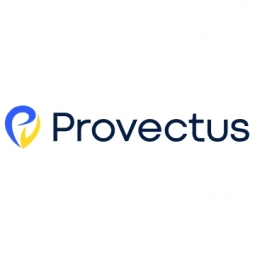
|
Forge Empowers Managers with Generative AI & IDP for Efficient Document Processing
Forge Global, Inc., a leading fintech company, was facing challenges in managing and processing large volumes of complex corporate documents. The company's existing manual and semi-automated document processing pipelines were unsustainable due to their lack of speed, cost-efficiency, and scalability. The task of processing clients’ corporate documentation could not be outsourced due to security and compliance concerns. The documents often contained sensitive information and any data extraction process had to comply with privacy laws and regulations. The company's leaders recognized the need for a more advanced and automation-focused solution to expedite the processing of incorporation documents, automatically extract data from them, and generate incorporation reports. They sought to partner with an AI solutions provider and technology consultancy to design and build the desired platform, while maintaining the security and compliance of its document- and data-centric operations.
|
|
|

|
CNH Industrial's Customer-Centric Aftermarket Supply Chain Transformation with Blue Yonder
CNH Industrial, a global leader in capital goods, was on a digital transformation journey with a focus on improving their customer experience. The company was seeking innovative solutions to optimize their spare parts management business across the 12 brands within the group. The challenge was to find a solution that could support the end-to-end supply chain, monitor changing customer needs, and align the supply chain with those needs in real-time. CNH Industrial needed a powerful processing, SaaS-based solution that could provide real-time visibility and collaboration across their supply chain, enhance collaboration across dealers and stakeholders in multi-tier networks, and maximize parts availability to minimize machine downtime and total cost of ownership (TCO).
|
|
|

|
Boosting Conversions by 300%: A Case Study on Brand24's Strategic Changes
Brand24, a popular social listening platform, was facing a significant challenge with its conversion rates. The company's CEO, Mike Sadowski, noticed that the conversion rates were considerably lower than the industry standard. The primary issue was a high bounce rate on the sign-up form for Brand24’s free trial. The bounce rate was much larger than anticipated, indicating a leaky funnel. Two main culprits were identified as causing the high bounce rate. Firstly, a promo code field was confusing users, leading to a high abandonment rate. Secondly, the sign-up form had too many distractions, causing users to click around chaotically, visiting the blog, looking into pricing again, and hovering over links.
|
|




